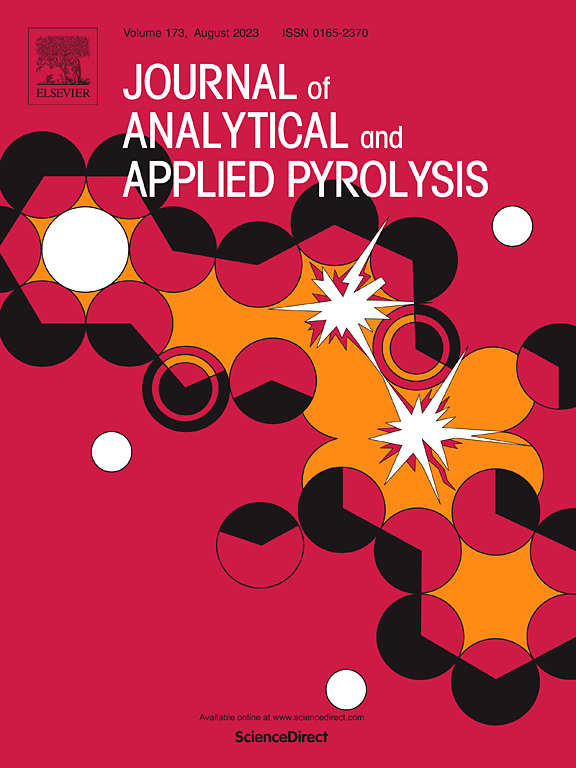Comprehensive valorization of oil-rich food waste through coupling transesterification with pyrolysis
IF 5.8
2区 化学
Q1 CHEMISTRY, ANALYTICAL
引用次数: 0
Abstract
Recent shifts in food consumption trends toward fried foods have increased the generation of oil-rich food waste. Although biological processes show promise for the food waste valorization, the presence of oil components limits microbial activity. This study proposes a thermochemical approach for valorizing oil-rich fried debris, a by-product of deep-frying, by coupling transesterification with pyrolysis. Characterization of fried-debris-extracted oil (FDO) revealed high impurity levels, free fatty acids and aldehydes. This necessitates transesterification method with more tolerance to these impurities than the conventional acid-treated process. A thermally-induced transesterification demonstrated the impurity tolerance, representing biodiesel yield exceeding 95 wt% regardless of the mixing ratio of aldehyde-to-refined olive oil. When applying to FDO, this process yielded a consistent biodiesel output (41.1 wt%), representing a 1.43-fold increase compared with the conventional transesterification. As a strategy for the comprehensive valorization of fried debris, de-fatted fried debris (DFD) remaining after oil extraction was further pyrolyzed. To impart a sustainability to the pyrolysis system, CO2 was employed as a reactive agent. CO2 showed a reactivity of converting DFD-derived volatiles into syngas, particularly CO, while producing biochar. The CO2 reactivity was accelerated when conducting catalytic pyrolysis over Ni catalyst, resulting in 71.43 wt% syngas and 18.47 wt% biochar. To evaluate the environmental benefits of this process, the CO2 mitigation potential of biodiesel, syngas, and biochar was estimated, representing an annual reduction of 14.24 × 108 kg CO2 in South Korea.
求助全文
约1分钟内获得全文
求助全文
来源期刊
CiteScore
9.10
自引率
11.70%
发文量
340
审稿时长
44 days
期刊介绍:
The Journal of Analytical and Applied Pyrolysis (JAAP) is devoted to the publication of papers dealing with innovative applications of pyrolysis processes, the characterization of products related to pyrolysis reactions, and investigations of reaction mechanism. To be considered by JAAP, a manuscript should present significant progress in these topics. The novelty must be satisfactorily argued in the cover letter. A manuscript with a cover letter to the editor not addressing the novelty is likely to be rejected without review.

 求助内容:
求助内容: 应助结果提醒方式:
应助结果提醒方式:


